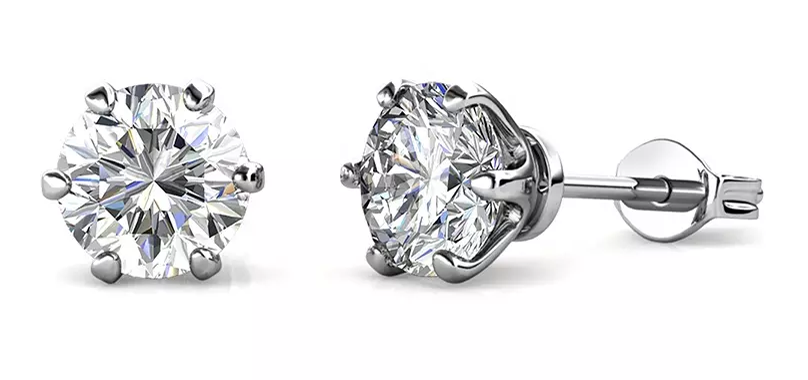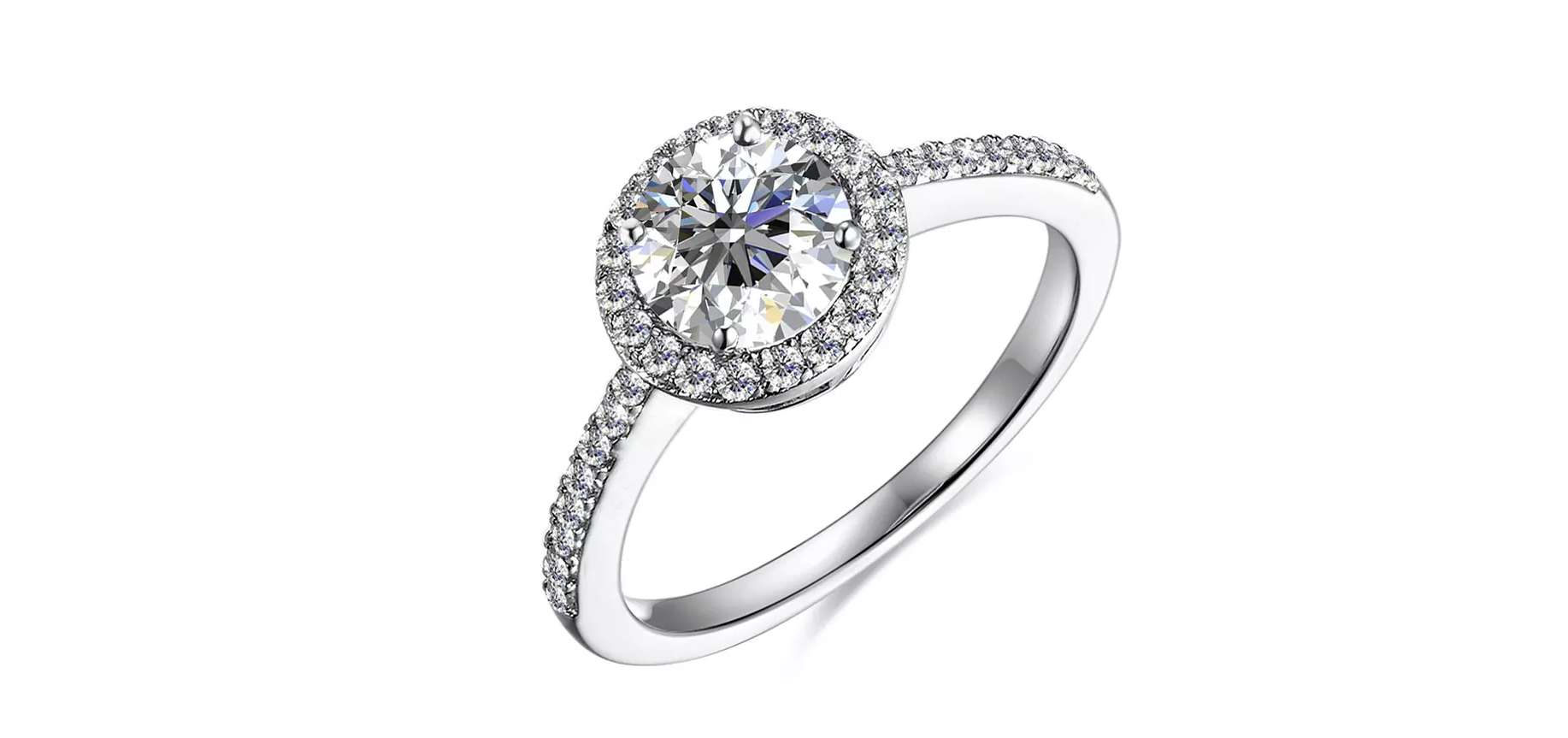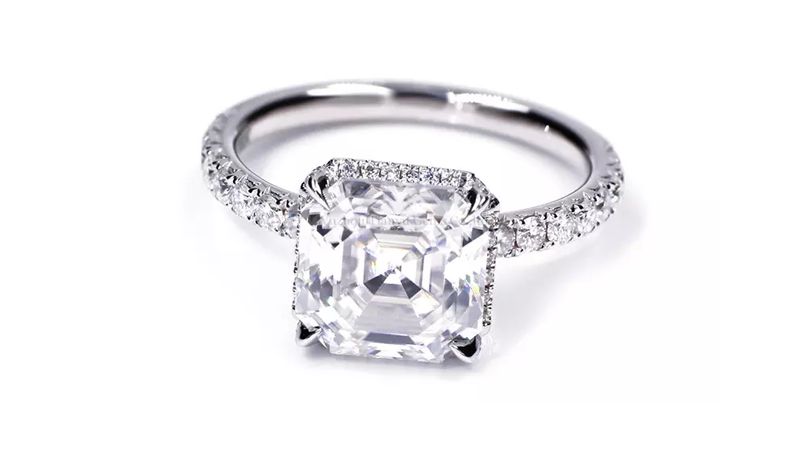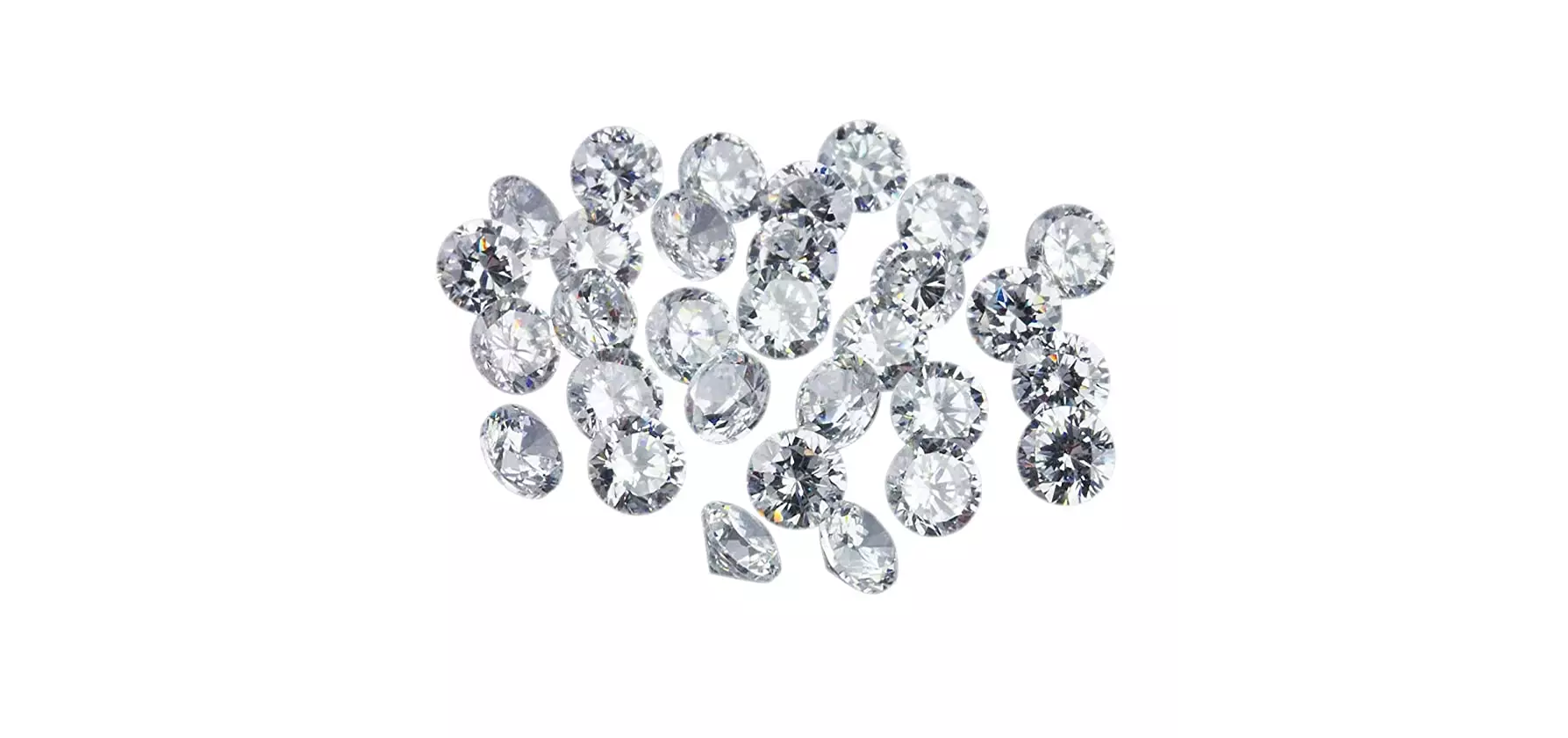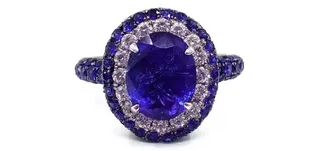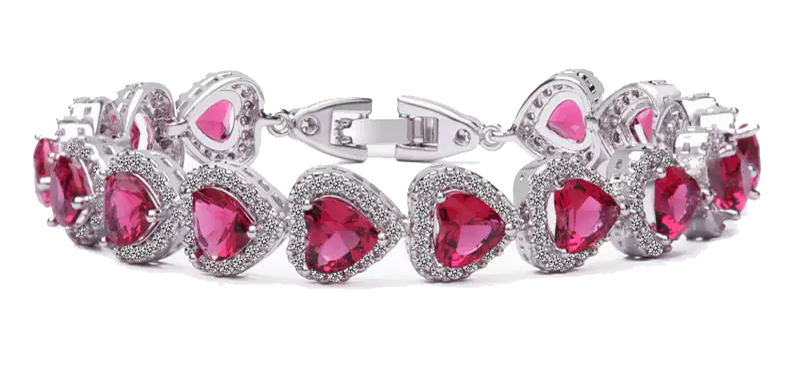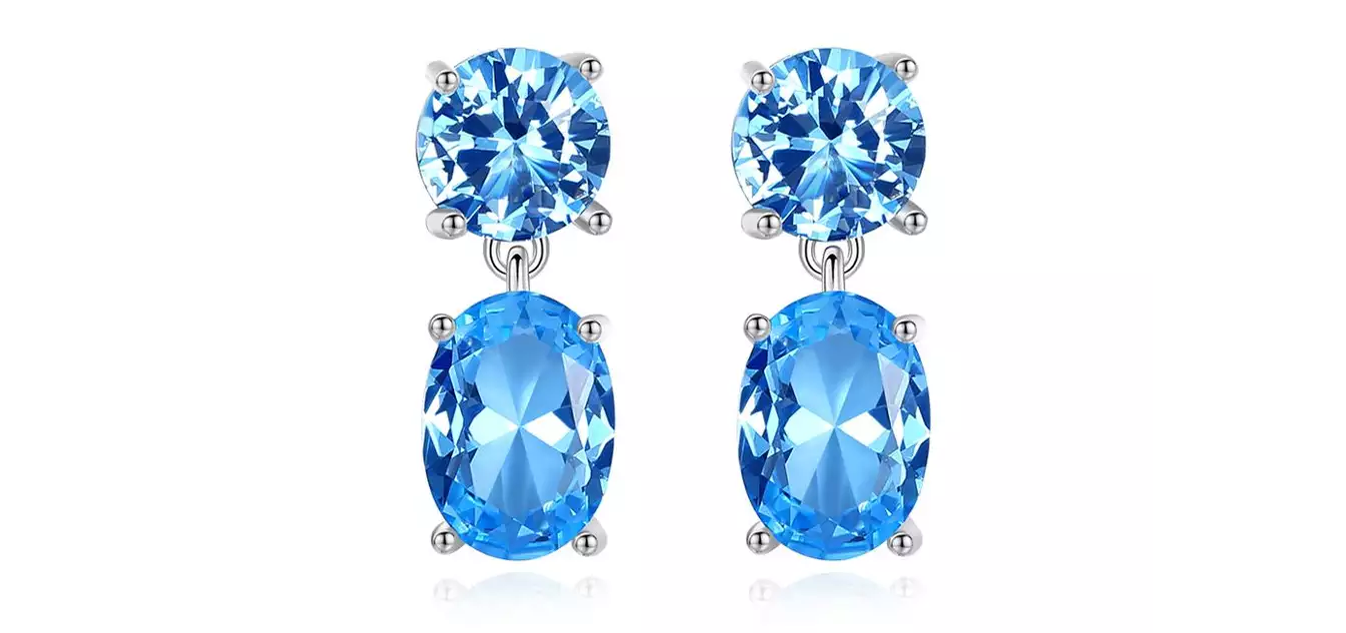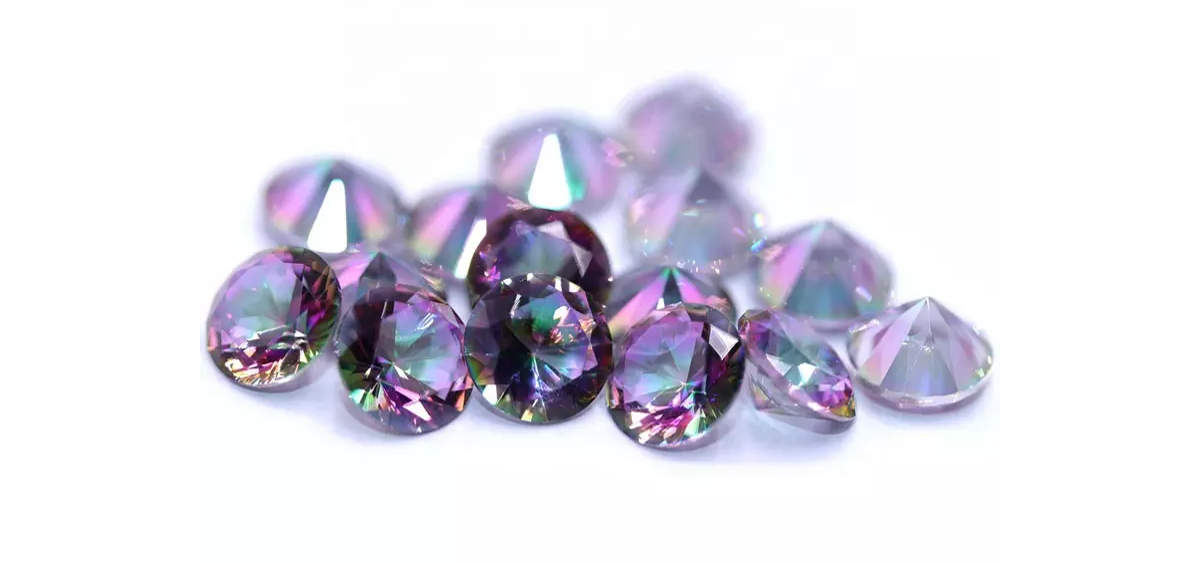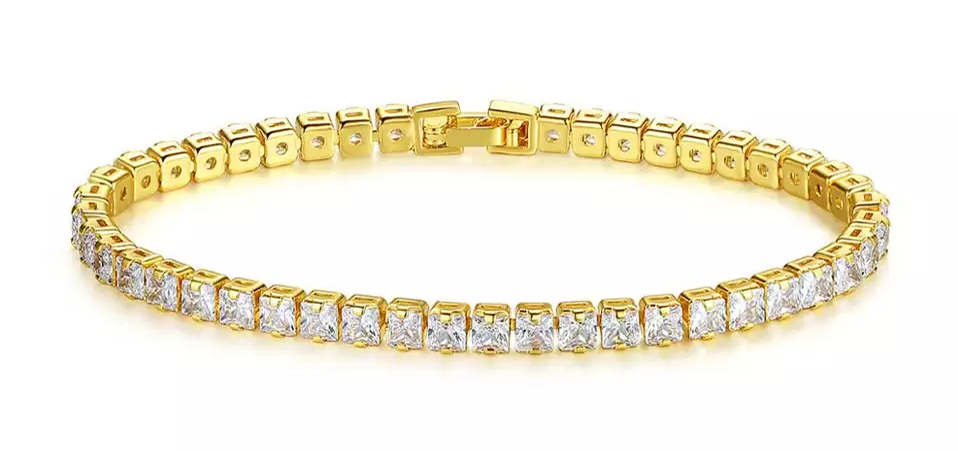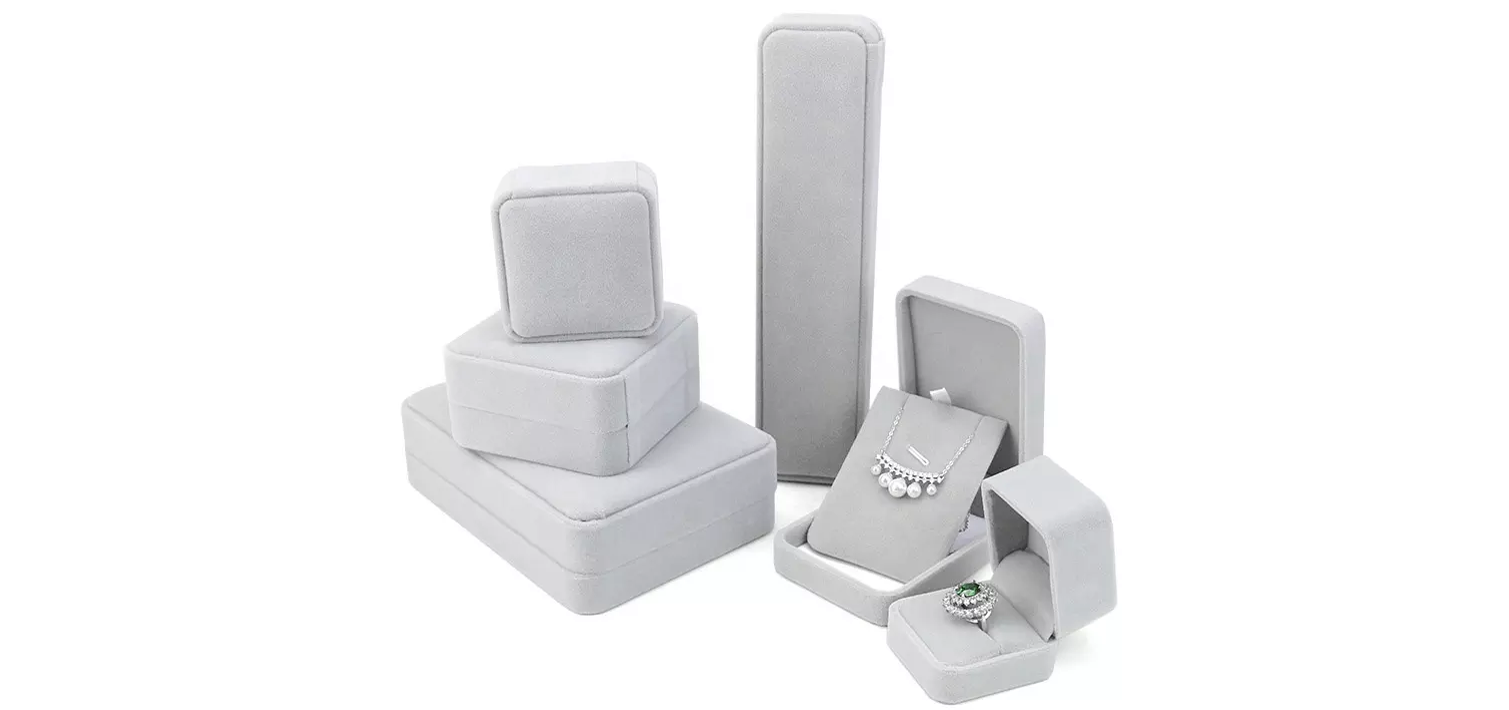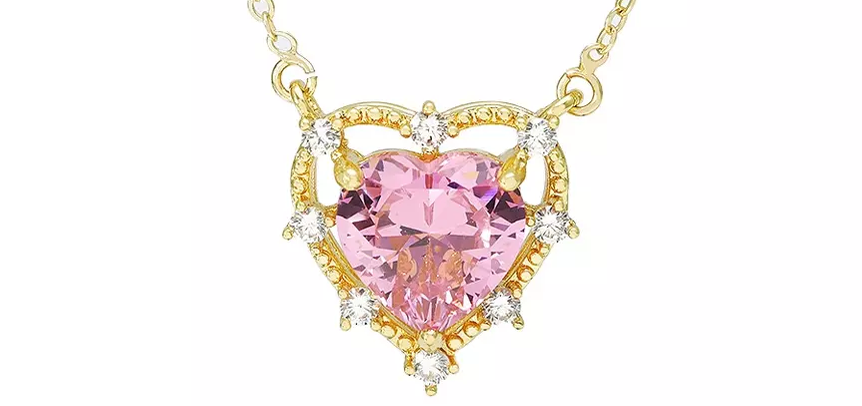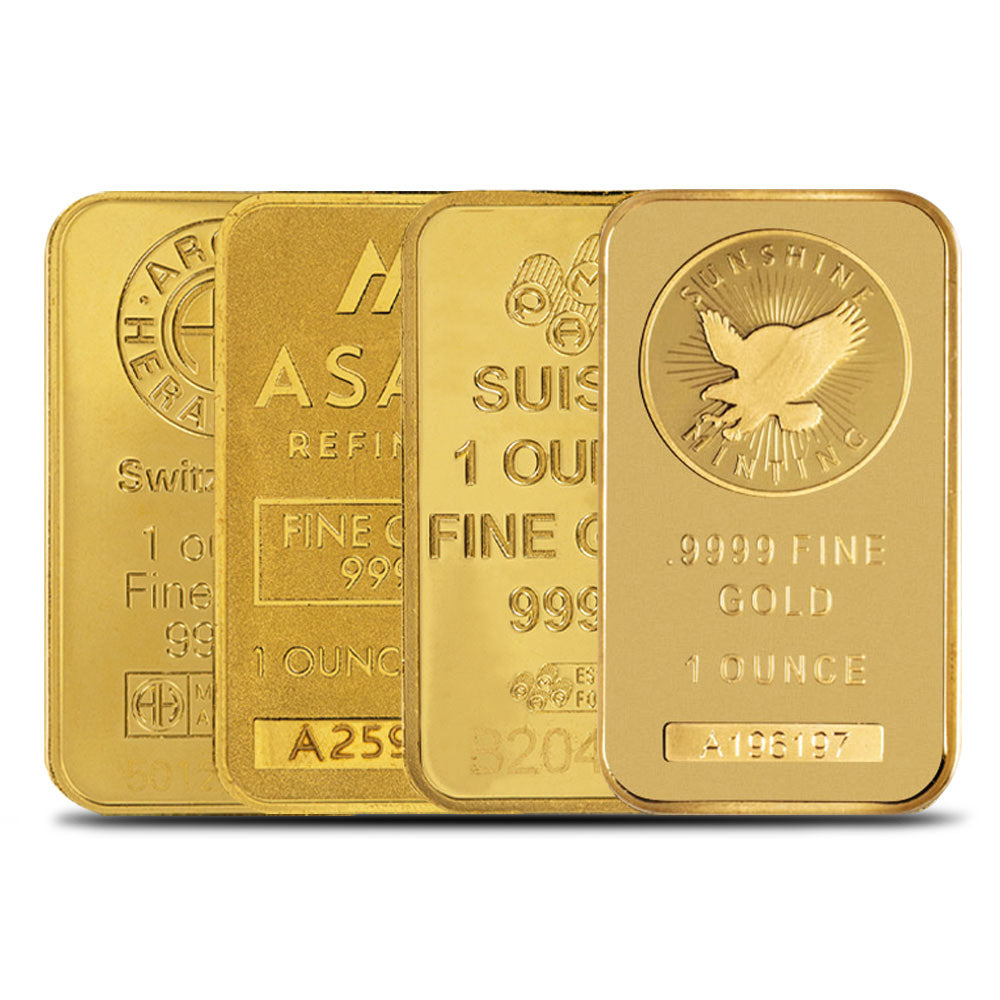Ruby Education
Ruby is one of the most popular color gemstones available today. The gemstone is incredibly hard, making it resistant to scratching and a great choice for jewelry that will be worn often. The deep, crimson color is often seen as a symbol of love, making these gemstones highly sought-after. In fact, large rubies can draw higher prices than equal sized diamonds! Purchasing ruby jewelry can seem a little intimidating, but SilverandGold.com has put together a guide to help you understand the various aspects of a ruby so you can make the right purchase for you!
Color
Color is one of the two most important C’s when discussing rubies and possibly the most significant in affecting a ruby’s value. The GIA (Gemological Institute of America) color grading system revolves around three characteristics: hue, tone, and saturation. The most prized rubies feature a pure hue ranging from a vibrant red to a slightly purplish-red. If the hue strays too far from the primary red color of a ruby, either becoming too orange-red or purplish, the quality of the ruby is lower. The depth of the color of the ruby is referred to as its tone. If the color is too light, the stone is no longer considered a ruby; instead it is considered a pink sapphire. If the color is too dark, it will negatively impact the stone’s brightness. There is some debate among gem dealers in determining the borderlines of ruby color. A gemstone’s saturation is determined by the purity and intensity of the color. The most sought after rubies show little gray or brown and are described as having a vivid color saturation.
Clarity
A ruby’s clarity is determined by visible inclusions and transparency, as well as how it transmits light. Most rubies have some inclusions, as an inclusion free stone is incredibly rare. Inclusions can be fractures or other materials that were trapped within the stone’s structure while it formed, such as gas or minerals. The highest quality ruby is considered “loupe clean”, meaning that even when inspected with 10x magnification, the inclusions are not visible. These inclusions cannot be seen with the naked eyed making these rubies quite rare and very valuable. The next quality tier of clarity are rubies with very small inclusions, which are eye clean, or rubies with small inclusions that may be visible with the naked eye. Obvious inclusions that reduce the transparency or brightness of a ruby will dramatically lower that stone’s value. There are several types of common inclusions in rubies.
- Silk inclusions look like fibers and are commonly found in clusters within the stone. They are on not on the surface of the ruby; rather they look like fine fibers inside the stone. If a stone has too many of these inclusions, they can discolor the bright red hue of a ruby.
- Crystal inclusions appear to be white or black grains within the crystals and can significantly impact the ruby’s color and light reflection.
- Twinning occurs when crystals are interconnected within the stone. They can diminish the light reflection of the stone and affect the color.
- Fingerprints are a common inclusion seen in rubies. They are small inclusions clustered together mimicking a fingerprint. These inclusions are less likely to impact the overall quality of the stone.
Not all inclusions negatively impact a ruby’s appearance, however. The presence of mineral rutile silk can cause light to scatter across the ruby, adding softness and light to the stone. Or, needles can intersect and cause a star effect, called asterism, which can be desirable.
Ruby Treatments
Because a ruby without inclusions is incredibly rare, there are certain treatments for rubies to enhancing their clarity. These treatments include Heated, Flux Healed, Beryllium Diffused, and Glass Filled rubies.
- One of the most common treatments for rubies is heat. Heat treatments help remove rutile inclusions and can improve the color and saturation of the gemstone. The ruby is heated to 1800 degrees and the heat dissolves the rutile inclusions while improving the color and clarity of the ruby, mimicking the natural process a ruby undergoes while forming. No other additives are used to alter the ruby and the treatment is permanent.
- Flux Healed rubies are coated before they are heated to prevent rubies from stick to one another while being heated. Sometimes, this material will melt and fill in flaws or crevices in the stone, improving the clarity. However, the value of the ruby is decreased, as a outside substance has impregnated the stone. SilverandGold.com does carry rubies that have been flux healed.
- Beryllium is added to a ruby as it is heated in the beryllium diffused treatment. This process will enhance the color of the ruby, creating a vibrant, rich red. com does not carry rubies that have been beryllium diffused.
- Lower grade rubies can be enriched using a glass filled treatment, which is relatively new. During this treatment, the stone is bleached and then heat treated with liquid glass. The glass infiltrates the ruby and improves the clarity. However, this treatment is not stable with temperature changes, making it the least desired treatment. SilverandGold.com does not carry rubies that have been glass filled.
Cut and Shape
A ruby’s crystal shape greatly affects its suitability for certain cuts. A quality ruby cutter will consider which shape will maximize the ruby’s color and carat weight while trying to minimize inclusions. Although cut is often the least important of the 4 Cs for colored gemstones, it can significantly impact the value of a ruby. Brilliant cuts, or cuts that maximize light return and sparkle, or step cuts, those that enhance color, are recommended for rubies. Often, these two cuts are mixed, creating brilliant-cut crowns and step-cut pavilions, to maximize both light return and create a bright, uniform color.
The common shapes of rubies often follow the same conventional shapes used for diamonds. Round rubies are commonly seen in solitaire rings, earrings, or as accent stones on rings. Two of the most popular ruby shapes that reduce rough wastage and draw out color are cushion and oval. However, rubies can also be cut in many shapes, including princess, emerald, and heart. These shapes aren’t as common and are difficult to find in larger sizes, since they do not preserve the rough weight as well as the cushion and oval shapes do. Rubies over one carat are rare, so preventing waste when considering a shape is important. Certain inclusions can also be seen as positives in rubies and can affect the most suitable shape for that stone. For example, a ruby that displays an asterism, the star effect, is typically cut en cabochon, or as a rounded stone, to highlight the phenomenon.
Carat
Carat refers to a gemstone’s weight, not size. Rubies and diamonds should not be equated, as rubies have a tendency to to be deeper in all shapes. Therefore, a ruby’s carat weight and a diamond’s carat weight will rarely be equal even if the measurements are the same. This means that if a ruby has the same carat weight as a diamond, it will appear smaller. This is especially noticeable in round shaped rubies.
Created Ruby
It is important to note that synthetic (or created) rubies exist. Complex synthesis processes have been developed that simulate the natural formation of rubies. These synthesized rubies can be difficult to identify, as they look natural, with colors and inclusions very similar to a natural stone. While there is nothing wrong with purchasing created ruby jewelry (in fact, it's a great way to get the look of a high end ruby without spending a fortune), any reputable jeweler will be sure to make it clear if a ruby is synthetic or natural so you are fully informed about your purchase.



